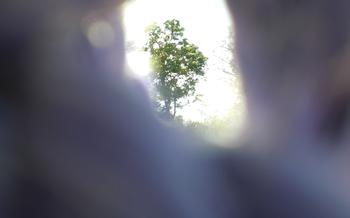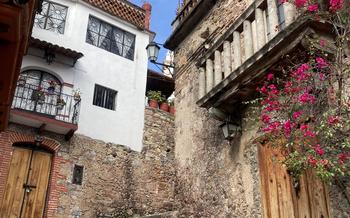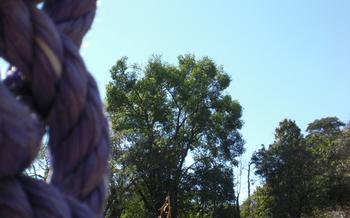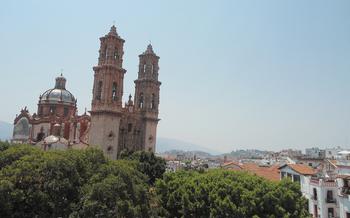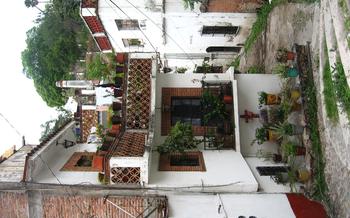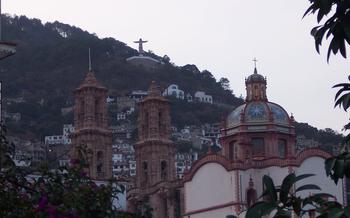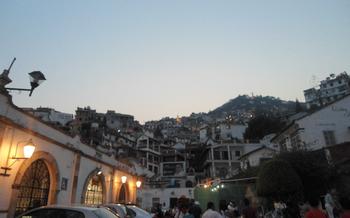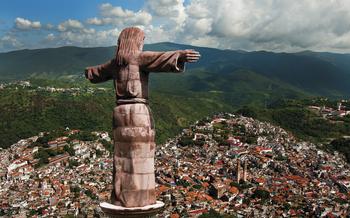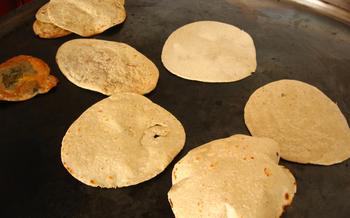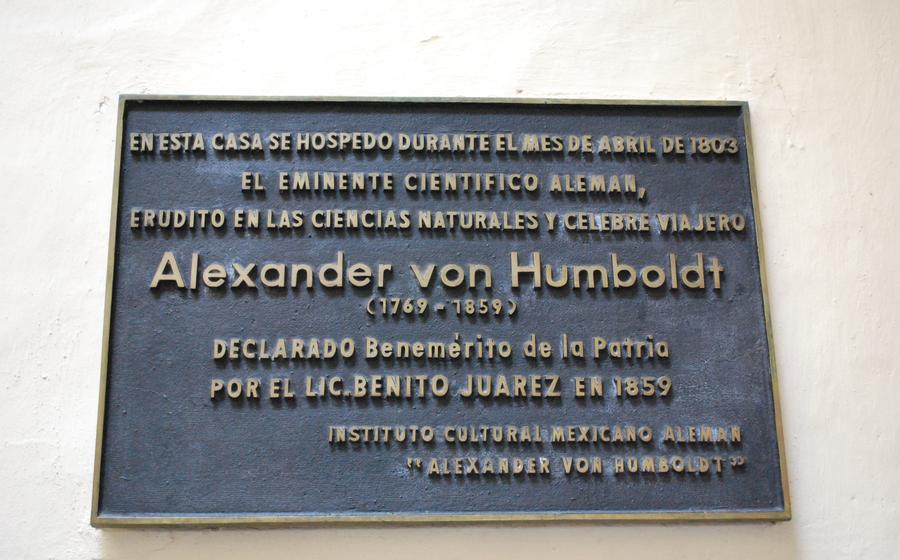
Casa Humboldt
- Casa Humboldt: A Historical Gem
- Location and Accessibility
- Museum Exhibits and Collections
- Humboldt's Legacy in Mexico
- Casa Humboldt's Architecture
- Temporary Exhibitions
- Research and Education Center
- Guided Tours
- Museum Shop and Bookstore
- Accessibility for Visitors with Disabilities
- Casa Humboldt's Gardens: A Natural Oasis
- Photography and Videography Policy
- Visiting Tips and Etiquette
- Insider Tip: Uncovering Hidden Treasures
Casa Humboldt: A Historical Gem
Nestled in the heart of Taxco, Mexico, the Casa Humboldt stands as a testament to the rich history and cultural significance of the city. Built in the 16th century, the house was once the residence of Alexander von Humboldt, a renowned German scientist, explorer, and naturalist who made significant contributions to the understanding of Mexico's geography, natural history, and culture. The Casa Humboldt's architectural features, including its intricate stone carvings, arched doorways, and colorful tiles, reflect the fusion of European and Mexican design elements. Its unique design elements, such as the central courtyard and the rooftop terrace, offer visitors a glimpse into the lifestyle and work of Humboldt during his time in Mexico. Today, the Casa Humboldt serves as a museum and cultural center, showcasing exhibits that delve into Humboldt's life and work, as well as the cultural heritage of Taxco.
Location and Accessibility
The Casa Humboldt is strategically located in the heart of Taxco, just a 5-minute walk from the city's main square, Plaza Borda. Its exact address is Calle Humboldt 4, Centro, 40200 Taxco de Alarcón, Guerrero, Mexico. This central location allows visitors to conveniently explore other attractions in Taxco, such as the Santa Prisca Cathedral, the William Spratling Museum, and the many silver shops and galleries that line the cobbled streets.
Public transportation options are readily available, with several bus stops within a short walking distance of the museum. For those driving, limited street parking is available in the surrounding area. The Casa Humboldt is also accessible for visitors with disabilities, with wheelchair ramps and an elevator providing easy access to all floors of the museum.
Museum Exhibits and Collections
The Casa Humboldt museum offers a diverse range of permanent and temporary exhibits that showcase the life and work of Alexander von Humboldt, as well as Mexican history and culture. Among the highlights of the permanent collection are Humboldt's personal belongings, such as his scientific instruments, maps, and manuscripts. Visitors can also explore exhibits on Mexican flora and fauna, mining, and the history of Taxco. Temporary exhibits often focus on specific aspects of Humboldt's research or on contemporary issues related to science, environment, and culture.
Interactive displays and educational programs make the museum accessible and engaging for visitors of all ages. Interactive exhibits allow visitors to learn about Humboldt's scientific discoveries and their impact on Mexico. Educational programs include guided tours, workshops, and lectures that delve deeper into the museum's collections and themes. Audio guides are available in multiple languages, providing visitors with a self-guided tour experience.
Humboldt's Legacy in Mexico
Alexander von Humboldt's contributions to Mexican science, geography, and natural history are immeasurable. His meticulous observations and detailed descriptions of Mexico's flora, fauna, geology, and climate laid the foundation for modern scientific research in the country. Humboldt's work also had a profound impact on Mexican culture, literature, and art, inspiring generations of artists, writers, and intellectuals.
One of Humboldt's most significant contributions was his study of the Humboldt Current, a cold ocean current that flows along the western coast of South America. Humboldt's research on the current's effects on climate and ecosystems was groundbreaking, and it continues to be studied by scientists today. The Humboldt Current is a vital part of Mexico's marine ecosystem, and it supports a diverse array of marine life.
Humboldt's legacy extends far beyond his scientific contributions. He was a passionate advocate for social justice and equality, and he used his influence to promote the rights of indigenous peoples and to fight against slavery. Humboldt's work continues to inspire researchers, activists, and policymakers around the world, and his legacy as a champion of science, justice, and exploration endures.
Casa Humboldt's Architecture
The Casa Humboldt stands out for its unique architectural style, which harmoniously blends European and Mexican elements. The building's exterior showcases intricate stone carvings, wrought-iron balconies, and a red-tiled roof that reflects the region's colonial heritage. The interior features spacious rooms with high ceilings, adorned with colorful Talavera tiles and elegant furnishings.
The Casa Humboldt was designed by Mexican architect Manuel Tolsá, who skillfully incorporated European neoclassical influences into the building's structure. The result is a masterpiece that embodies the cultural exchange between Mexico and Europe during the colonial period. The building's design also reflects the influence of Alexander von Humboldt, who was fascinated by Mexican architecture and incorporated some of its elements into his own designs.
The Casa Humboldt has undergone several renovations and restorations over the years, but it has retained its original character and charm. In the 1930s, the building was declared a national monument, and in 1994, it was meticulously restored to its former glory. Today, the Casa Humboldt stands as a testament to the architectural fusion that took place in Mexico during the colonial era, showcasing the blending of European and Mexican styles that shaped the country's unique identity.
Temporary Exhibitions
The Casa Humboldt regularly hosts temporary exhibitions that showcase a diverse range of themes, artists, and historical periods. These exhibitions often feature collaborations with other museums and institutions, bringing unique perspectives and collections to Taxco. Visitors can explore thought-provoking displays, admire the works of talented artists, and gain insights into various aspects of Mexican culture, history, and science.
To stay updated on upcoming exhibitions and events, visitors can check the Casa Humboldt's website or social media pages. The museum also offers a newsletter service that provides subscribers with the latest information on exhibitions, workshops, and special programs. By attending temporary exhibitions, visitors can enrich their understanding of Mexico's rich cultural heritage and gain a deeper appreciation for the contributions of Alexander von Humboldt and other notable figures.
Research and Education Center
The Casa Humboldt functions as a vital center for research and education, fostering intellectual exploration and academic collaboration. In partnership with universities and esteemed academic institutions, it provides access to a wealth of resources, including its comprehensive archives and library, for researchers delving into diverse fields of study. Educational programs tailored for students and teachers enrich the learning experience, fostering a deeper understanding of Mexico's rich history, culture, and natural environment. Through these initiatives, the Casa Humboldt perpetuates its mission as a catalyst for knowledge creation and dissemination, inspiring future generations of scholars and fostering a greater appreciation for Mexico's cultural heritage.
Guided Tours
Immerse yourself in the world of Alexander von Humboldt and Mexican history with guided tours at the Casa Humboldt.
Explore the museum's captivating exhibits and learn about the life and contributions of Alexander von Humboldt, a renowned German scientist, explorer, and naturalist who played a pivotal role in shaping our understanding of Mexico's geography, natural history, and culture.
Knowledgeable guides will take you on a journey through time, showcasing the museum's permanent and temporary exhibits. Delve into the diverse collection of artifacts, documents, and artwork that tell the story of Mexico's rich history and its connection to Humboldt's groundbreaking work.
Tours are available in multiple languages, ensuring that visitors from all over the world can appreciate the significance of Humboldt's legacy. Whether you're a history buff, a nature enthusiast, or simply curious about Mexican culture, these guided tours offer a unique and enriching experience.
Advance booking is recommended to secure your spot, but walk-up options are also available for spontaneous visitors. Don't miss the opportunity to gain deeper insights and a comprehensive understanding of the Casa Humboldt and its treasures.
Museum Shop and Bookstore
The Casa Humboldt offers a well-stocked museum shop and bookstore, providing visitors with a range of souvenirs, books, and educational materials related to Alexander von Humboldt and Mexican culture. The shop's proceeds directly support the museum's ongoing programs and conservation efforts, ensuring the preservation of Humboldt's legacy and the promotion of Mexican cultural heritage.
Visitors can browse a carefully curated selection of souvenirs, including postcards, magnets, keychains, and traditional Mexican handicrafts. These items make for perfect mementos of a visit to the Casa Humboldt, allowing visitors to take a piece of the museum's rich history and cultural significance home with them.
The bookstore offers an extensive collection of books, both in Spanish and English, covering a wide range of topics related to Humboldt's work, Mexican history, and culture. Visitors can find biographies of Humboldt, books on his scientific expeditions, and works exploring the impact of his research on Mexico and the world.
Educational materials, such as children's books, activity books, and educational kits, are also available at the shop. These resources aim to engage younger visitors and provide them with interactive and fun ways to learn about Humboldt's legacy and Mexican culture.
By supporting the Casa Humboldt's museum shop, visitors contribute to the preservation of this important cultural institution and help ensure that future generations can continue to learn about and appreciate the remarkable contributions of Alexander von Humboldt and Mexican heritage.
Accessibility for Visitors with Disabilities
The Casa Humboldt is committed to ensuring an inclusive and welcoming environment for all visitors. The museum is wheelchair accessible, with ramps and elevators providing access to all levels of the building. Audio guides and sign language interpretation are available upon request for visitors with hearing or visual impairments. Designated parking spaces are available for visitors with disabilities, and accessible restrooms are located throughout the museum. The staff at the Casa Humboldt is always happy to assist visitors with any accessibility needs.
Casa Humboldt's Gardens: A Natural Oasis
The Casa Humboldt boasts stunning gardens that are as captivating as the museum itself. These verdant havens, meticulously landscaped with native plants, flowers, and trees, offer visitors a serene oasis to relax and connect with nature.
Humboldt's keen interest in botany is reflected in the gardens' diverse flora. Visitors can admire the vibrant colors of bougainvillea, the delicate fragrance of jasmine, and the majestic presence of ancient cypress trees. The gardens also feature a variety of cacti and succulents, showcasing the region's unique desert ecosystem.
Strolling through the gardens, one can almost imagine Humboldt himself, notebook in hand, meticulously observing and documenting the local flora. The gardens served as an outdoor laboratory for Humboldt's scientific research, providing him with invaluable insights into the region's biodiversity.
Beyond their scientific significance, the gardens also hold historical value. They have been lovingly preserved and restored to their original splendor, offering visitors a glimpse into the past and allowing them to experience the beauty that Humboldt himself admired.
Whether seeking a tranquil retreat or a deeper connection to Humboldt's legacy, the Casa Humboldt's gardens are an essential part of any visit to this historic and cultural gem.
Photography and Videography Policy
Photography and videography are generally allowed inside the Casa Humboldt to capture and share your experience. However, there are a few guidelines to ensure the preservation of the museum's artifacts and the privacy of other visitors.
Flash photography and tripods are not permitted in certain areas, particularly near delicate exhibits or in dimly lit galleries. These restrictions aim to minimize damage to light-sensitive artifacts and create a more conducive viewing environment for all visitors.
It is important to be respectful of other visitors and avoid obstructing their views or disrupting their enjoyment of the museum. Refrain from using selfie sticks or other intrusive equipment that might inconvenience others.
Professional photographers and videographers who wish to capture more extensive footage or conduct commercial shoots may require special permission from the museum administration. Advance notice and coordination are necessary to ensure that your project aligns with the museum's policies and guidelines.
By following these guidelines, you can contribute to the preservation of the Casa Humboldt's treasures and ensure a positive experience for all visitors.
Visiting Tips and Etiquette
To make the most of your visit to Casa Humboldt, it's helpful to keep a few tips and etiquette guidelines in mind. Firstly, plan your visit for a weekday or morning hour to avoid the crowds that tend to gather in the afternoon. Dress respectfully, as the museum is a cultural institution, and be mindful of your behavior, keeping your voice down and respecting the tranquility of the space.
When exploring the exhibits, be sure to read the accompanying descriptions and labels to gain a deeper understanding of the artifacts and their significance. If you have any questions or need assistance, don't hesitate to approach the friendly and knowledgeable museum staff. To fully immerse yourself in the experience, consider joining a guided tour, which offers valuable insights and historical context.
Remember to take your time and savor every moment, allowing yourself to be captivated by the beauty and history that surround you. Embrace the opportunity to learn and appreciate the legacy of Alexander von Humboldt and his profound impact on Mexican culture and science.
Insider Tip: Uncovering Hidden Treasures
Beyond the main attractions of the Casa Humboldt, there lies a hidden gem waiting to be discovered. Tucked away in a secluded corner of the museum, visitors can find a small room dedicated to the life and work of a remarkable Mexican artist, José María Velasco. Often overlooked by the crowds, this room houses a collection of Velasco's stunning landscapes, each capturing the essence of Mexico's natural beauty. Take a moment to immerse yourself in the vibrant colors and intricate details of his paintings, and you'll discover a hidden treasure that will stay with you long after your visit. So, venture beyond the beaten path and uncover the secrets that the Casa Humboldt holds.

